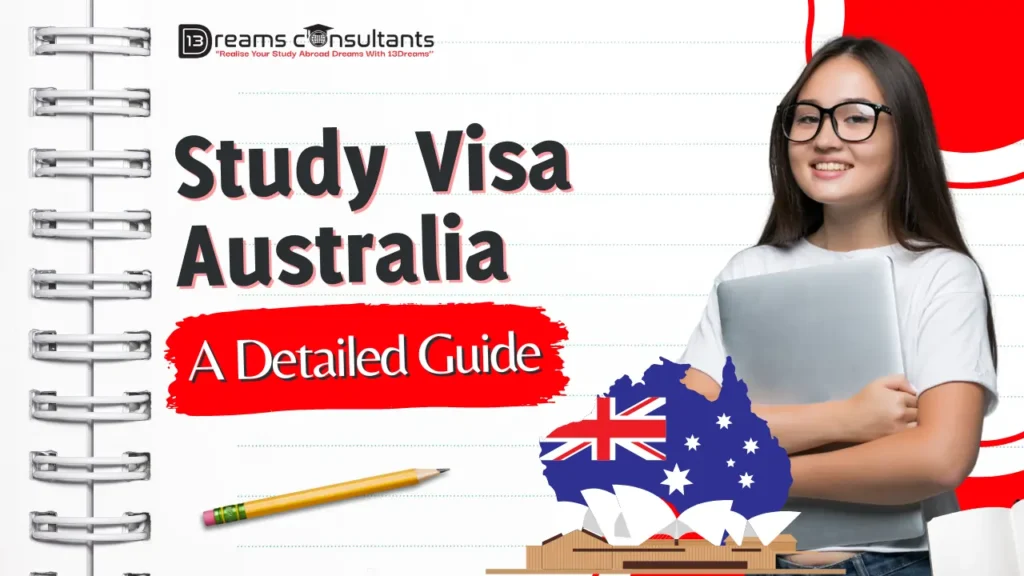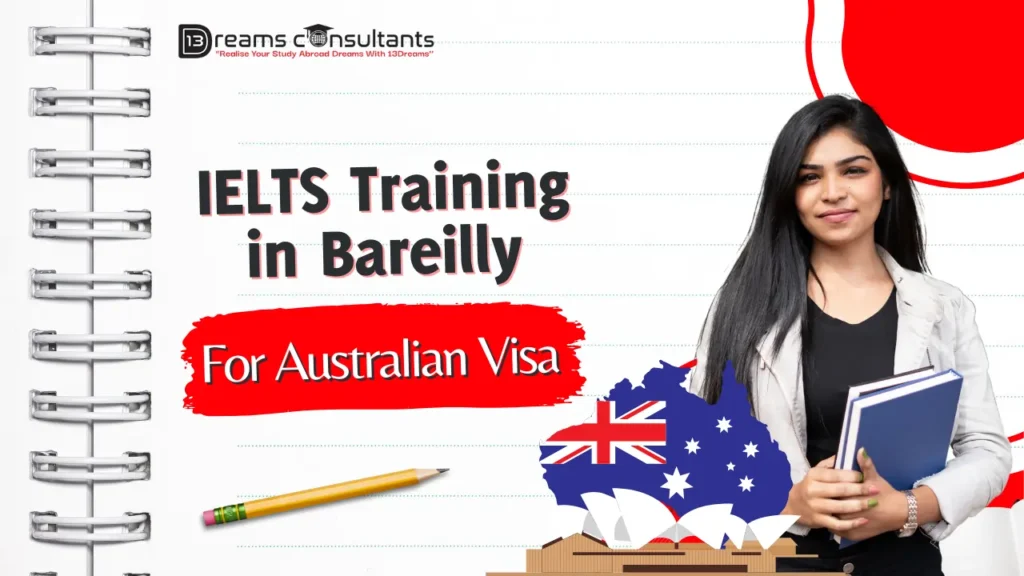Navigating the complexities of student visa applications can be daunting, especially when there’s a study gap involved. A study gap, often taken for personal growth or academic preparation, can raise questions in the minds of visa authorities.
However, with the right approach and documentation, a study gap can be turned into a compelling part of your story. This blog delves into the intricacies of aligning your study gap with the stringent requirements of student visas, ensuring that your educational journey continues seamlessly across borders.
This guide explains how Australian student visa eligibility is affected by long study gaps, how to justify the gap convincingly, and steps to take to strengthen your visa application despite periods of inactive study.
Understanding Concept of Study Gap
Understanding the concept of a study gap is crucial when applying for a student visa. A study gap is a period of time when a student takes a break from formal education. This can be due to various reasons such as personal circumstances, the need for financial savings, health issues, or the desire to gain work experience or travel.
In the context of student visas, a study gap can be a concern for visa officers as they may question the student’s commitment to education or suspect non-academic motives for entering the country. However, if explained properly, a study gap can also be seen as a period of valuable life experience and personal development.
How Study Gaps Impact Visa Eligibility
While a study gap doesn’t automatically disqualify you from receiving a student visa, it can impact your eligibility depending on several factors:
1. Country and Visa Program: Different countries have varying policies regarding study gaps in student visa applications. Some are more lenient, while others might require a strong justification for longer gaps. Research the specific requirements of the country you’re applying to and the specific student visa program.
2. Length of the Gap: Generally, shorter gaps (e.g., one year or less) are less likely to raise concerns compared to longer gaps. However, the specific timeframe considered acceptable can vary across countries and programs.
3. Reason for the Gap: The reason behind your study gap plays a crucial role. Legitimate reasons like:
- Medical reasons: Providing documentation to support medical issues can justify a gap.
- Family reasons: Supporting documents like birth certificates or death certificates can explain family-related reasons for a gap.
- Work experience: Relevant work experience can be seen positively, especially if it aligns with your chosen field of study.
- Volunteering or community service: Demonstrates engagement and commitment to meaningful activities.
4. Maintaining Educational Pursuit: If you have a gap between studies, demonstrating continued engagement in learning activities can be helpful. This could include:
- Online courses or certifications: Showcase your continued interest in learning and skill development.
- Volunteer work or internships: Demonstrate engagement in relevant activities.
5. Overall Application Strength: A strong overall application can help offset concerns about a study gap. This includes:
- Strong academic record: Good grades in previous studies demonstrate your academic ability.
- Standardized test scores: Meeting or exceeding required scores in tests like IELTS or TOEFL can be beneficial.
- Strong Statement of Purpose: Clearly explain your educational goals, chosen program, and future plans, addressing the gap if necessary.
Remember, consulting with a registered migration agent or the official immigration department website of your target country can provide even more specific and personalized guidance regarding your situation.
These concerns put applications with unexplained lengthy study gaps at risk of visa refusal. You need to convince officers your academic and visa intentions are genuine.
Justifying Your Study Gap Convincingly
Here are some tips on how to convincingly justify your study gap in a student visa application:
1. Be honest and transparent: Don’t try to fabricate or downplay the gap. Honesty goes a long way in building trust with the visa officer.
2. Explain the reason clearly and concisely: Briefly explain the specific reason for your gap. Focus on the most impactful aspect and avoid unnecessary details.
3. Provide evidence to support your reason: If possible, include documents that validate your explanation. This could include:
- Medical certificates for health-related reasons
- Family documents (birth certificates, death certificates) for family-related reasons
- Employment documents (pay stubs, work certificates) for work experience
- Volunteer certificates or letters of recommendation for volunteering or community service
4. Highlight the positive aspects of your gap (if applicable):
- Work experience: Explain how your work experience is relevant to your chosen field of study and demonstrate your skills and work ethic.
- Volunteering or community service: Show how these experiences demonstrate your commitment to meaningful activities and social responsibility.
- Online courses or certifications: Showcase your continued engagement in learning and skill development.
5. Connect the gap to your future studies (if possible):
- Explain how the gap helped you gain maturity, clarity, or skills that make you a better candidate for your chosen program.
- If your gap activities are related to your field of study, highlight how they prepared you for your educational journey.
6. Integrate your justification into your Statement of Purpose: Briefly and professionally address the gap in your Statement of Purpose (SOP). Briefly explain the reason and highlight any positive aspects.
7. Proofread and edit carefully: Ensure your explanation is well-written, free of grammatical errors, and presented professionally.
Remember, a convincing justification comes down to honesty, clarity, and showcasing the positive impact of your gap, if applicable. While a strong justification can help, it’s crucial to present a strong overall application with good academic records, standardized test scores, and a compelling SOP to increase your chances of visa success.
Seek professional guidance: Consult 13 Dream Consultants a registered migration agent for personalized advice and assistance with your specific situation.
Country-Specific Guidelines
Student visa guidelines regarding study gaps vary significantly by country. Here are some general factors and examples of country-specific guidelines:
| Country | Maximum Study Gap Accepted | Documentation Required | Additional Notes |
|---|---|---|---|
| USA | Not specified | Proof of ties to home country, academic transcripts, proof of financial support | Visa officers assess on a case-by-case basis. |
| UK | Up to 10 years (varies by institution) | CV, personal statement, reference letters | Some universities may require an interview. |
| Canada | Up to 5 years (varies by program) | Explanation letter, updated qualifications | Emphasis on how the gap was spent productively. |
| Australia | Up to 10 years (varies by institution) | Employment history, evidence of skills development | A longer gap may require more substantial evidence. |
| Germany | Up to 7 years (varies by institution) | Proof of recent educational activities, language proficiency | Some programs may have stricter requirements. |
General Factors Considered:
- Length of the Gap: Short gaps (a few months) are usually less of a concern than long gaps (several years).
- Reason for the Gap: Acceptable reasons can include travel, work experience, family obligations, or health issues. Evidence to support the reason (e.g., employment letters, medical certificates) is often required.
- Academic Performance: Strong academic records can sometimes offset concerns about a study gap.
- Intended Course of Study: A study gap may be less relevant if the chosen course aligns with the applicant’s previous studies or work experience.
Country-Specific Examples:
- United States: The U.S. generally doesn’t have specific rules regarding study gaps. However, applicants need to demonstrate their intent to study and may need to provide additional documentation explaining the gap.
- Canada: Study gaps are assessed on a case-by-case basis. The longer the gap, the more documentation may be required to demonstrate the applicant’s commitment to studying.
- United Kingdom: The UK considers the reasons for the gap and the applicant’s overall profile. If the gap is significant, a strong explanation and evidence of academic or professional progress during that time may be needed.
- Australia: The Genuine Temporary Entrant (GTE) requirement considers study gaps. Applicants must prove their genuine intention to study in Australia and that the gap was not used to circumvent immigration rules.
- Germany: Gap years are generally accepted, especially if they involve activities like internships or language courses. However, very long or unexplained gaps could raise concerns.
Recommendations:
- Research Thoroughly: Look up the specific student visa requirements of the country you are applying to.
- Prepare Documentation: Gather evidence that supports your reason for the study gap.
- Explain Clearly: In your application or interview, clearly articulate your reasons for the gap and your commitment to your studies.
- Seek Guidance: If unsure, consult with an educational advisor or immigration lawyer familiar with the specific country’s regulations.
Steps to Offset Study Gaps
Here are some positive steps you can take to balance out a long period of inactive study before applying for an Australian student visa:
- Improve English skills by taking English classes seriously during gap years. Achieve high English test scores like IELTS 7+ to show strong proficiency.
- Complete a short professional upskilling course related to your intended field of study. This demonstrates academic readiness.
- Gain extensive work experience over the gap years to justify the break from studies.
- Secure unconditional university acceptance even before visa application. This confirms academic eligibility.
- Show sufficient funds to cover the entire course costs upfront. This proves financial ability.
- Provide strong ties to your home country like family, job, or property. This minimizes overstay risk perceptions.
- Explain post-study plans clearly like returning home for employment. Don’t leave your future vague.
The more you can neutralize doubts around your study gap, the higher the chances of Australian student visa approval.
Conclusion
Yes, it is possible to obtain an Australian student visa with a long gap of around 9 years since your previous studies. However, you should explain the gap years convincingly, highlight what you achieved during that period, and showcase your readiness to succeed academically in Australia. Addressing study gaps smartly along with a well documented visa application can help achieve your Australian education dream.



